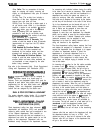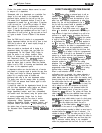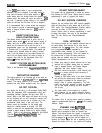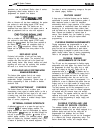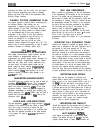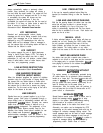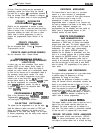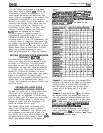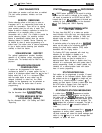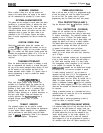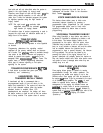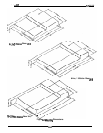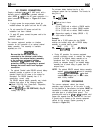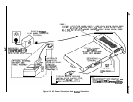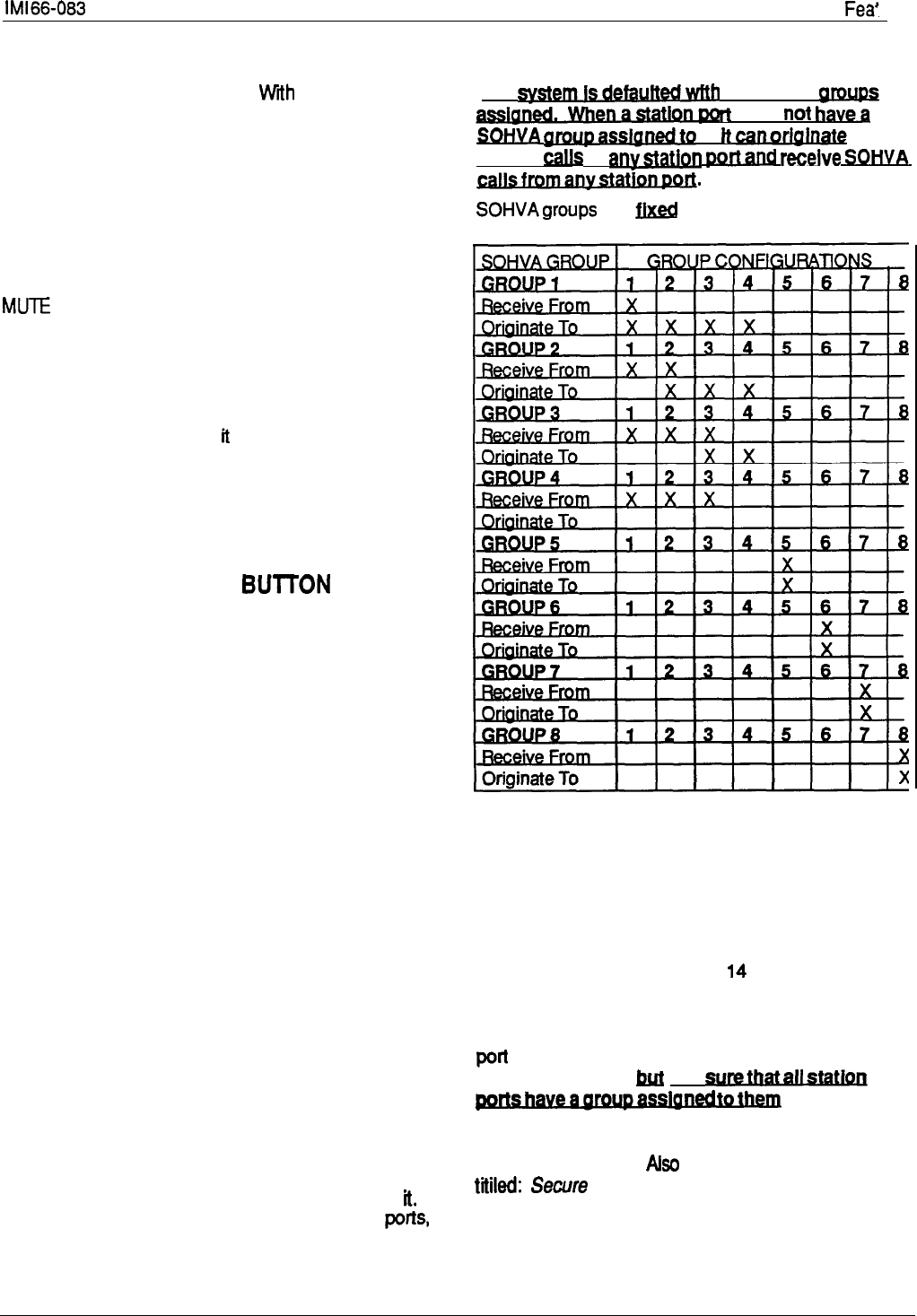
on a call. A station being operated in a handsfree
mode cannot receive a SOHVA Wflh SOHVA, the
announcement is delivered and responded to in a
secure manner that prevents the distant party from
hearing either the announcement or the response. The
announcement is preceded with a tone alert and is
delivered to the handset receiver of the telephone. The
announcing caller receives a tone alerting them that
they are making a SOHVA call. Response to the
announcement can be verbal or non-verbal. Verbal
response is effected by pressing and holding the
MLJTE
button and speaking into the handset.
Non-verbal response is effected by pressing a
pre-programmed programmable button to send a
message to be shown on the display of the
announcing station (if it is an LCD speakerphone). The
announcing station is automatically disconnected after
the message is delivered to
tt
(and displayed if an LCD
speakerphone). Stations that have the voice announce
blocking feature turned on cannot receive a SOHVA
Station class of service programming is used to
disable the SOHVA feature at a station port if desired.
SECURE OFF-HOOK VOICE ANNOUNCE
ORIGINATE
BUlTON
This feature allows a telephone user to program a
button at their station that must be pressed to enable
the delivery of a SOHVA call. This SOHVA enabled
button allows the caller, after hearing a busy signal, to
decide whether the called party should be interrupted
in a SOHVA manner. If they should, the button can be
pressed and a SOHVA call completed. This button,
along with SOHVA groups allows system users greater
control of the callers that are allowed to make a
SOHVA call and of the situations that SOHVA calls are
allowed. Refer to the discussions titled: Secure
Off-Hook Voice Announce, and Secure Off-Hook Voice
Announce Groups.
SECURE OFF-HOOK VOICE
ANNOUNCE (SOHVA) GROUPS
The ability of a station port to originate an&or receive
SOHVA calls can be arranged by class of service
programming with the assignment of SOHVA calling
groups to station ports. This means that certain station
ports can be arranged together for SOHVA calling
between one another while other station ports in the
system are excluded from this group.
Eight different SOHVA groups are provided by the
system. They are fixed into a variety of SOHVA
receive/originate configurations. One SOHVA group
can be assigned to each station port to allow or to
deny SOHVA receive and/or originate capability to
1.
By properly assigning SOHVA groups to station ports,
SOHVA paths between stations can be opened or
lMl66-083 Description Of System Fea:
blocked.
The
m
no SOHVA
~JWJB
R
does
not
havu
SOHVA
V
It.
It
tamxkW@
SOHVA
calls
to
anjm.Wm
pound
receive
SDHVA
calls.
SOHVAgroups are
&6d
by the system into the
following configurations:
Example 1:
Allow station port 10 to originate SOHVA
messages to all stations in the system and allow those
stations the ability to originate SOHVA messages to
each other but not to station port 10. Assign group 1
to station port 10 and assign group 2 to all other
station ports.
Example
2: Allow station ports
14
and 15 to receive
and originate SOHVA calls between each other but
deny both receive and originate capability from any
other system stations. Assign group 8 to both station
port 14
and
station port 15. Do not assign group 8 to
any other station port hrrt
be
m
tothem
.
The SOHVA groups are assigned in station class of
service programming. Atso refer to the discussions
tttiled: Secure Off-Hook Voice Announce,
and
Secure
Off Hook Voice Announce Button.
2-15



